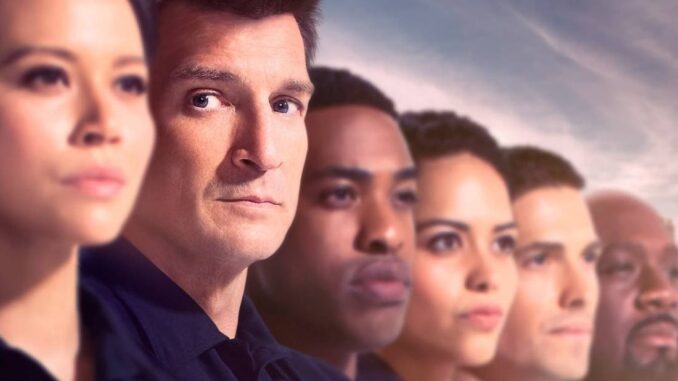
Beyond the Badge: Forging Partnerships That Resonate More Than Romance in The Rookie
"The Rookie" has carved a niche for itself, not just as a procedural cop show, but as a character-driven exploration of mentorship, camaraderie, and the diverse relationships that shape our lives. While the slow-burn romance between Tim Bradford and Lucy Chen, affectionately known as "Chenford," has captivated audiences, its dominance as the "best" partnership is a notion ripe for debate. The show, at its core, is a tapestry woven with threads of unexpected alliances, deep-seated trust, and the profound impact of shared experiences. Some partnerships, born from necessity and nurtured by genuine connection, resonate even deeper than the will-they-won't-they tension of Chenford, offering a more nuanced and compelling portrayal of human connection within the high-stakes world of law enforcement.
Consider the bond between Nolan and Sergeant Grey. Their dynamic transcends the simple hierarchy of rookie and training officer. Grey, initially skeptical and even adversarial, embodies the cynicism born from years on the force. Nolan, an idealistic and unwavering optimist, challenges that cynicism at every turn. Their interactions, initially fraught with tension, gradually evolve into a profound respect and mutual understanding. Grey becomes more than just a supervisor; he becomes a reluctant mentor, guiding Nolan through the treacherous waters of police work while simultaneously learning from Nolan's inherent goodness and unwavering belief in the potential for redemption. This isn't just about teaching the rules; it's about reshaping perspectives. Grey's gruff exterior masks a genuine care for Nolan, a desire to protect him from the harsh realities he knows too well. This partnership, built on challenging preconceptions and finding common ground despite vastly different life experiences, offers a richer, more emotionally complex narrative than the budding romance of Chenford.
Furthermore, the unlikely pairing of Nyla Harper and James Murray deserves recognition. Harper, a fiercely independent and often abrasive character, operates on the fringes of the rules, trusting her gut and relying on her instincts. James, a social worker dedicated to helping vulnerable communities, approaches conflict with empathy and a deep understanding of systemic issues. Their initial clash is palpable. Harper sees James as naive and idealistic, while James views Harper as cynical and insensitive. Yet, through shared cases and challenging personal circumstances, they develop a deep respect and affection for one another. James's gentle guidance allows Harper to see the world through a different lens, prompting her to confront her own biases and understand the root causes of crime. Harper, in turn, protects James, providing him with the necessary grit and street smarts to navigate dangerous situations. Their partnership, fueled by contrasting perspectives and a shared desire for justice, highlights the importance of diverse voices and the power of collaboration in addressing complex social problems. This dynamic, rooted in profound personal growth and a commitment to making a real difference, resonates with a depth that extends beyond romantic longing.
Even within the realm of more conventional police partnerships, Angela Lopez and Wesley Evers offer a compelling alternative to Chenford. Their marriage, initially a source of personal conflict, has blossomed into a powerful and supportive partnership that extends beyond the domestic sphere. As a detective, Lopez relies on her sharp instincts and relentless dedication to justice. Wesley, as a defense attorney, operates within the legal framework, fighting for his clients' rights. Their contrasting perspectives often clash, creating ethical dilemmas and challenging their commitment to one another. However, it is precisely through these challenges that their bond strengthens. They learn to appreciate each other's unique skills and perspectives, recognizing that their differences ultimately make them a stronger team, both professionally and personally. Their partnership showcases the complexities of balancing personal and professional lives, navigating ethical quandaries, and supporting each other through thick and thin, a narrative that offers a more mature and grounded portrayal of partnership compared to the romantic tension of Chenford.
Ultimately, the "best" partnership in "The Rookie" is subjective and depends on individual preferences. However, to suggest that Chenford is the only, or even the most compelling, partnership in the show is to ignore the rich tapestry of relationships that contribute to its success. The dynamics between Nolan and Grey, Harper and James, and Lopez and Wesley offer alternative narratives of connection, built on mutual respect, shared experiences, and a commitment to making a difference in the world. These partnerships transcend the limitations of romantic tropes, exploring the complexities of human connection in all its forms. They demonstrate that the true strength of "The Rookie" lies not just in its captivating plotlines, but in its ability to portray the enduring power of partnerships that go beyond the badge, forging bonds that resonate long after the credits roll.
